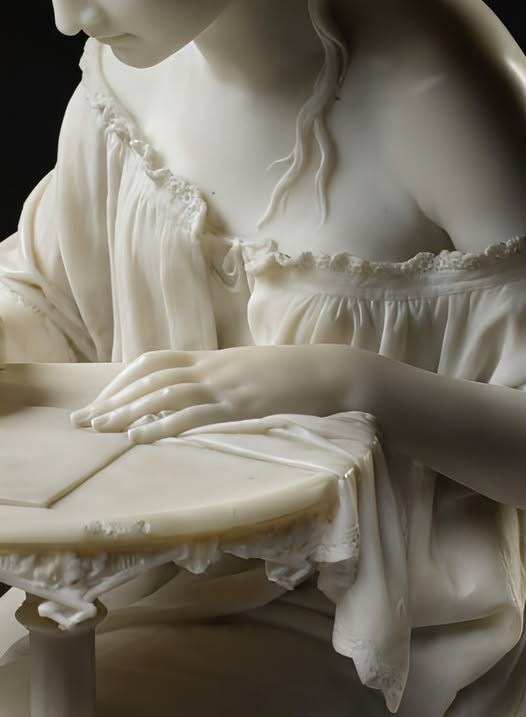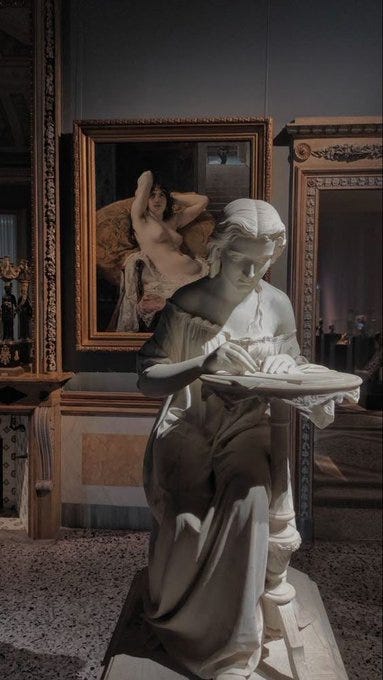Giovanni Spertini’s Girl Writing, 1874
In the quiet corridors of 19th-century Italian sculpture, Giovanni Spertini (1821–1895) carved moments—intimate, unassuming, and achingly human. A Milanese artist trained at the Brera Academy, Spertini specialized in genre subjects: scenes of everyday life elevated to lyrical permanence. His works traveled widely—Munich, Paris, Dublin—but it is Fanciulla che scrive (Girl Writing, 1874) that remains his most tender triumph.
A Stillness That Speaks
She sits, poised yet relaxed, her gaze lowered, her hand mid-motion. Carved from white marble and set on a mottled grey base, the girl is caught in a moment of introspection, perhaps mid-thought, perhaps mid-sentence. Her dress falls in soft folds, her hair loosely gathered, her posture natural.
There is no ornamentation, no allegory—just a girl, writing.
But this simplicity is deceptive. The technical mastery is profound: the delicate fingers, the subtle tension in her wrist, the gentle curve of her back.
Spertini’s marble breathes. It captures the quiet dignity of intellectual labor, the grace of solitude, the sanctity of thought.
The Feminine Mind, Monumentalized
In an era when female literacy was still a contested space, Spertini’s choice to monumentalize a girl in the act of writing was quietly radical. She is not muse, nor myth, nor martyr. She is a thinker. The sculpture doesn’t ask us to admire her beauty—it asks us to respect her mind.
This is not a portrait of a specific girl, but a universal gesture: the inward turn of creativity, the private joy of articulation.
Her youth suggests promise, her concentration suggests purpose. She is both timeless and timely—a marble echo of every girl who ever picked up a pen.
A Legacy of Tender Realism
First exhibited at the Accademia di Brera in 1867 and later at the Exposition Universelle in 1878, Girl Writing was part of a broader movement toward realism in sculpture—away from mythological grandeur, toward human truth.
Today, the life-size version resides in the Galleria d'Arte Moderna in Milan, while smaller reductions continue to circulate, quietly enchanting viewers with their soft defiance.
Spertini may not be a household name, but in this sculpture, he achieved something rare: a work that feels like a whisper, yet lingers like a hymn.
Thank you for being part of Cultural Canvas! If you love what we do, consider supporting us to keep it free for everyone. Stay inspired and see you in the next post!





What a piece, thank you.